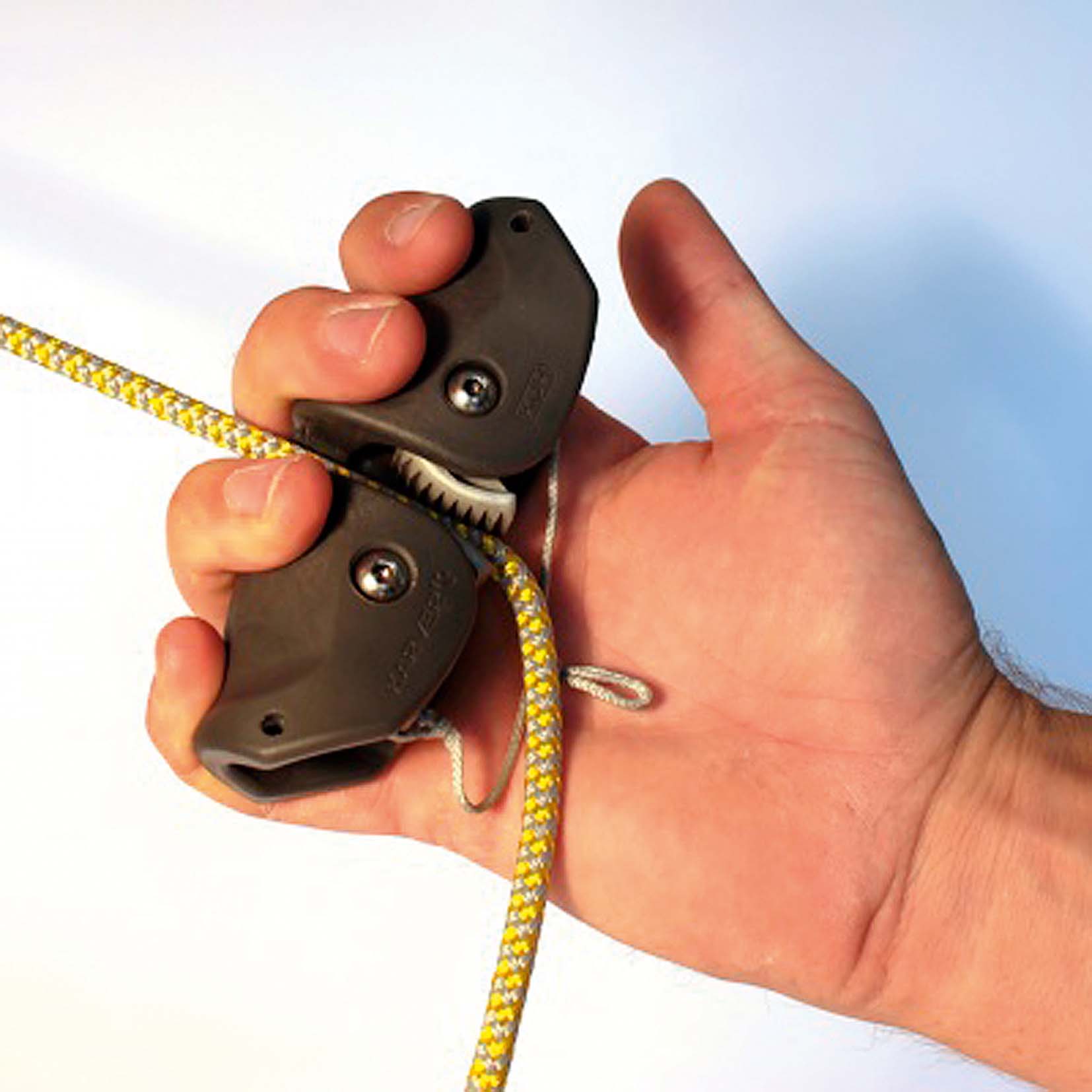Who’s it for? Any sailor who wants added purchase when hand-pulling a rope of 8mm or less. Tested by Matthew Sheahan
Karver KJH Handle tested
There can be few actions in sailing more fundamental than pulling a rope and even fewer that could be reinvented. Perhaps that’s why I found the Karver KJH handle so intriguing. How on earth could they improve an action that was so basic?
The answer is to attach a handle to the line. Dinghy sailors have known this for years, with trapeze handles used in all sorts of situations where they can be attached to the dead end of a control line to enable a quick and efficient pull. What Karver have done is to design a handle that is completely portable and can be attached to almost any rope up to 8mm in diameter. The design is impressively simple – a set of sprung cam cleats inside a moulded handle.
To use the device, you simply drop the handle over the line and slide it forward slightly to open the jaws, then let the rope settle in before pulling back. If you’re racing and in a rush, it takes a little while to get used to the correct action. And you have to use two hands – one to hold the handle, the other to lift the rope in place. But once you’ve mastered it, the unit is highly effective, particularly on modern high-modulus ropes that are thin and stiff, making them more difficult to grip.
A number of uses presents themselves, from hauling on control lines to sheets. With practice you can even use the device for halyards. Another clever use is as a flying cam cleat. The handle comes with a small Spectra strop which can be attached to a fixed point or even a block and tackle to allow you to transfer or tension lines. But perhaps even more impressive is that this is not simply a device for racing sailors – the KJH handle is useful aboard cruisers big and small.
The only downside I could find was stowage. Ideally, the KJH is most useful when kept about your person. In a racing situation a pocket is not that convenient and too slow to access, yet the manufacturers advise strongly that you should not attach it to yourself for obvious reasons.
The answer it seems is to find the right jacket with a pocket and to anticipate when you’re going to use it. With practice you do and for cruising this is not even an issue. Overall, then, an ingenious and handy bit of kit that reinvents one of the most basic operations of all.
Verdict
Overall, an ingenious and handy bit of kit that reinvents one of the most basic operations of all.





